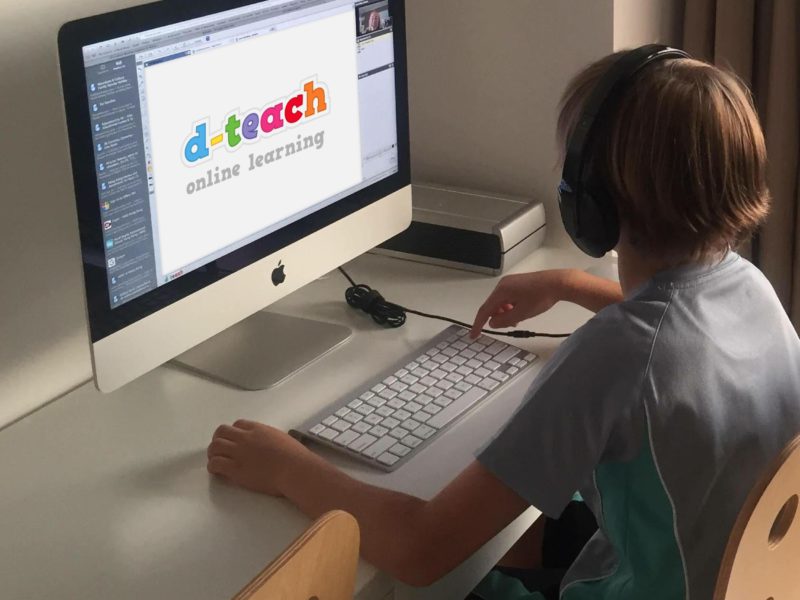
In the developed world, such as the United States, synchronous teaching has been weakened by the dominant mode of online teaching.
The easy availability of the Internet has reduced the need to teach in real time, but more importantly there is a strong pedagogical preference for asynchronous teaching, which can be accessed by students anytime, anywhere.
Instruction sessions are increasingly divided so that students find exactly the kind of learning objects they think they need. Repeated viewing of short videos is encouraged to master the content.
Sometimes universities even have policies against the use of synchronous components in online learning, for fear of undermining the goal of online learning that aims to overcome differences in time, place and pace of learning.
Teachers, on the other hand, don’t care about synchronous online teaching. When we introduced the lecture – a function of the Canvas by Instructure learning management system – to our faculty, it was enthusiastically received. Live broadcasting is re-emerging in online learning.
Blumenstyk wrote an article for the Higher Education Chronicle that illustrates how the University of Texas at Austin uses synchronous teaching as a “gateway drug” for teachers to move online. The myth that conferences are bad is also being questioned, as shown in Whorthen’s article “Lecture me. Really” for the New York Times.
This interest in synchronous teaching must be more than a passing retro trend. Synchronous teaching has many potential advantages for online learning. Improved technologies contribute to making synchronous teaching a viable option.
Synchronous teaching is also less intrusive to faculty, so that students can be recorded live in their classes, as a preferable alternative to us, instructional designers, negotiating with faculty to get time to produce short videos in front of a camera and a wall.
The most relevant thing, however, is that what is not wanted are free talks for online attendees. The interaction with the students gives life to good teaching sessions. Teachers can get energy and feedback from the audience through interaction. Pre-recorded sessions can’t do that.
Keep in mind, however, that real-time teaching is not going to be any easier, nor should it be considered a video copy of what you are already doing. For this teaching work to work, I would give some suggestions for those who ponder the use of real-time sessions for online teaching:
Choose the appropriate technology. Or rather, choose the right teaching environment. If you intend to teach at a distance, think of the tools that allow you to present, see faces, survey or chat.
If you intend to reuse lectures, make sure the tools you choose allow you to record your sessions and share them with students who may not be present at the time. I’ve helped teachers use Canvas Conference and Adobe Connect, and I’m happy with both.
Prepare digital resources in advance. If you intend to share images, presentation files, links and questions with students, make sure these assets are ready to use when present.
You don’t want to spend time searching for them in folders and subfolders that you can’t easily access or, worse, from sites that will need downloading once the presentation has started. Load those assets into the virtual classroom beforehand if possible.
Organize the computer. Keep your desk clean if you intend to share it with students. Ideally, create a separate presentation account on your computer so that calendar reminders and Facebook notifications don’t appear and are a distraction for you and your students.

Try the audio and video settings in advance so you don’t lose time in class to fix these problems. Try a mini session with a friend or colleague to make sure everything works for you. In the meantime, prepare students for class. Prepare tutorials for them to adjust their audio and video and be ready for live. Or schedule an orientation pre-session.
Establish rules. Do you intend students to use chat in the middle of a conference? Do you allow chat between students? When do you expect them to raise their hands and ask questions? Do you anticipate them sharing their video? Do you want to discourage the exchange of irrelevant information during a session? All of these questions should be communicated prior to a session.
Get started. All traditional presentation guidelines should be applied. I would like to add some specific suggestions. A good idea is to use dual monitors with resources in one window and your presentation in another to facilitate presentation.
If you intend to use the session repeatedly, consider whether it refers to specific time and people and that it may not help future students. It is a difficult balance if you want the conference to fit into the current class environment and if you also want it to be general. Each class may be different.
Record during transmission. Remember to press the record button when you are present so that other students can access it later. Also remember that some recordings have time limits.
Your recordings, for example, will remain in the system for two weeks. Download them, if necessary, for future use before they are deleted. If downloading is not possible, consider playing them back and recording them with other software if it allows it.
Edit your content for reuse. While editing video clips on discrete topics is even easier and pedagogically appealing, it is also good practice to change the preparation of post-production conferences. Use a media specialist if necessary.
Consider an online flipped classroom. Traditionally, when we talk about “inverted class” we talk about having part of the recorded lectures and online content, and the part about “active learning” in face-to-face sessions.
You can also invest online, keeping certain content (short videos, conference notes, readings, assignments, contests) online to be accessed at any time, while programming synchronous web conferences for the “active learning” part of your teaching.
Reflect on delivery methods. As far as I know, there is not one method or medium of teaching that is better than all others. After trying a few sessions, think about whether this method works for you. For example, if the reuse of the current session outweighs the interaction with the current class, you may want to consider recording the lecture in a studio.
It is not my intention to argue that we have found a new panacea for online teaching. Rather I would like to emphasize that there are times when it is the best medium for real time teaching in different places; at other times, asynchronous teaching may be a better option for you.
I hope I have challenged some assumptions about online teaching. I would like to reiterate that teaching at the same time and in different places is not very easy. Prepare thoroughly and rehearse often. It balances the current and future needs of the students. Then go online for more impact!
